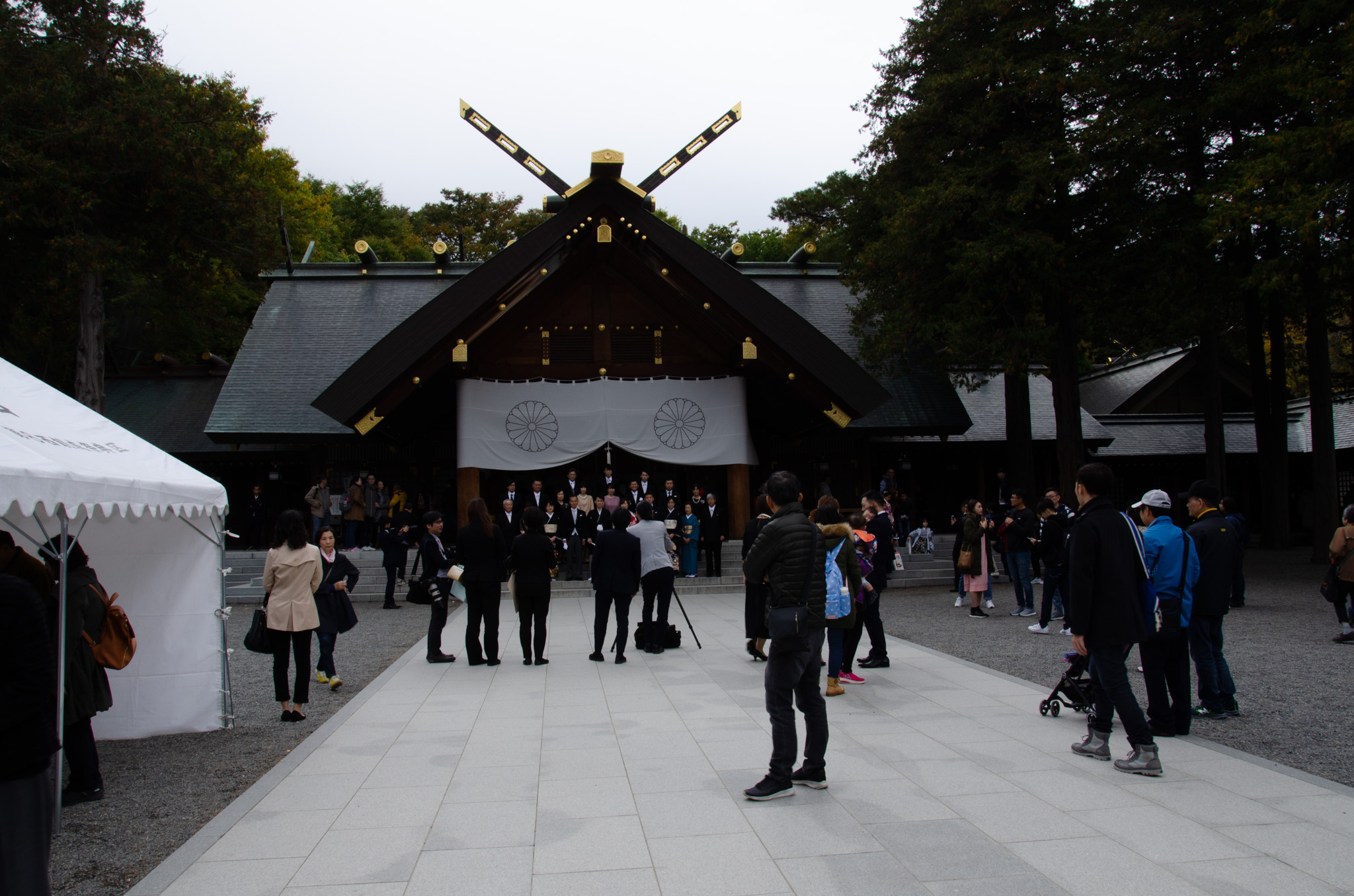Hokkaido Jingu is one of the most renowned sightseeing spots in Sapporo. Situated in Maruyama, at the western end of downtown Sapporo, this shrine is a must-visit destination for tourists.
Hokkaido Shrine is one of the shrines bustling with not only local citizens but also tourists throughout the year. Upon passing through the large torii gate facing the main street, you will find a garden on your left. The part of the garden closest to the road is a plum garden, and cherry trees are also planted there, making it a popular spot for cherry blossom viewing in spring.
In this garden, you may spot adorable Ezo squirrels that inhabit the area. There is a large tree near the souvenir shop by the main hall, which serves as the squirrels’ home, so please observe them quietly.
Right next to the shrine is Maruyama Park, which is a nice place for a leisurely walk. The park features two small ponds inhabited by families of ducks. However, be cautious of crows, as they can be mischievous. If you walk around eating hamburgers or similar food, you might get attacked by them. Small children, in particular, are often targeted.
Maruyama Park also has playground equipment, making it an enjoyable spot for families.
About Hokkaido Jingu
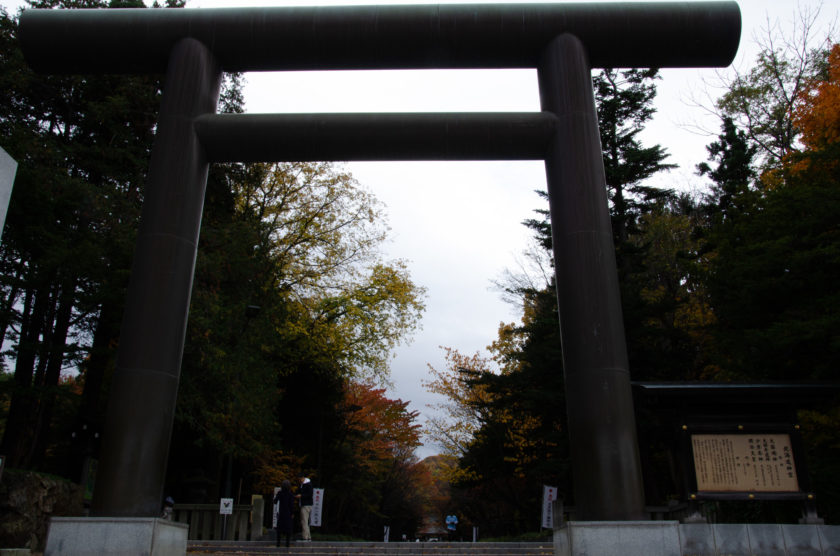
Hokkaido Jingu was built during the Meiji era to help protect Hokkaido from potential threats, such as Russia, which had been dominating the Kuril Islands and Sakhalin. This is why the large Torii gate of the shrine faces northeast.
There is another shrine called “Kaitaku Jinja (開拓神社),” which means “Development Shrine.” This shrine honors many individuals who contributed to the early development of Hokkaido, including Rinzo Mamiya.
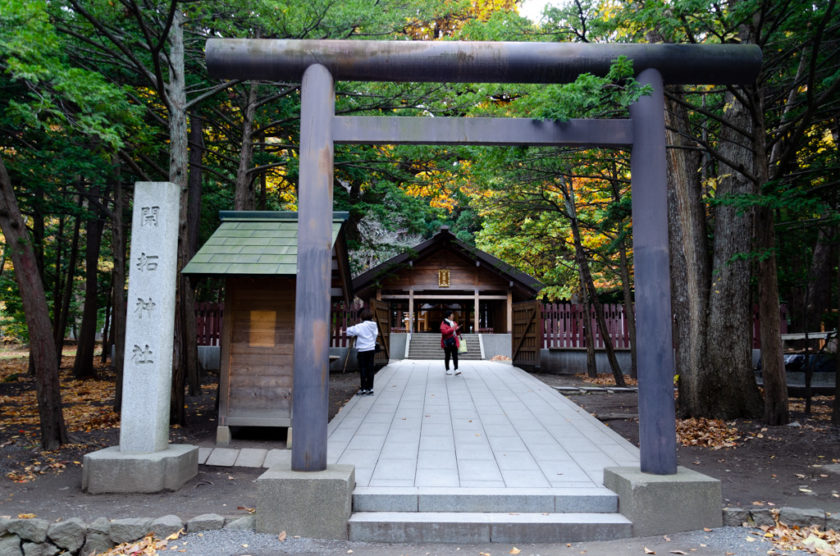
Hokkaido Jingu (Shrine) was originally built in 1871 and named Sapporo Jinja (Shrine). At that time, three deities were enshrined there.
Four deities of Hokkaido Jingu
- Ohkuni-no-Tama-no-kami(大国魂神)
- Ohmuna-muchi-no-kami(大那牟遅神)
- Sukuna-hikona-no-kami(少彦名神)
- Emperor Meiji(明治天皇)
Why are Shrines for Defense and Their Purpose?
In Japanese mythology, the Emperor is considered a divine figure with a deep connection to the founder of Japan, known as “Amaterasu Ohmikami (天照大神).”
During the Meiji Era, history and myth were intertwined, elevating the Emperor to a god-like status in the eyes of the Japanese people. Shrines served as places where gods resided and symbolized the Emperor’s power, which was seen as a protective force for Japan. This ideology was particularly significant from the Meiji to Showa eras, a period marked by numerous wars involving Japan, China, and Russia.
Shrines were not only places of worship but also centers where the government exerted control and provided education to the people. Although the war era has ended, there are still individuals who wish to maintain the same principles and governance as during the Meiji era.
After WWII
The Shrine was renamed Hokkaido Jingu(Shrine) in 1964 because the Emperor Meiji was enshrined as a deity. The Emperor Meiji had named Hokkaido instead of Ezo for ruling the northernmost island of Japan in the Meiji period.
Unfortunately, the main building was burned down in 1974. Somebody set fire but the case has been unsolved. The Shrine was rebuild in 1978.
From the midnight of 31st December to 1st January, mega dozens of people go to Hokkaido Jingu. It takes more than 1 hour for walking from the entrance to the main building that happens every year.
Hokkaido Jingu Festival called Sapporo Matsuri(Festival)
The Hokkaido Jingu Festival runs from June 14th to 16th and stands as one of Hokkaido’s most significant shrine festivals, with a history spanning over a century.
On the 16th, the highlight is the “Mikoshi Procession,” where more than 1,000 participants don vibrant costumes reminiscent of Heian period scrolls. This procession showcases four mikoshi (portable shrines) carrying the deities of Hokkaido Jingu, accompanied by eight floats, parading through the city. Beginning at Hokkaido Jingu in Maruyama, the procession winds through the city center, culminating in a grand display of the mikoshi and floats at Odori in the afternoon, attracting throngs of spectators and fostering a jubilant ambiance.
Within the precincts of Hokkaido Jingu, visitors can indulge in food stalls and partake in traditional dedicatory events. Moreover, Nakajima Park hosts an array of stalls and attractions, including haunted houses, offering pre-summer entertainment for residents and visitors alike.
Access
Exiting from No.3 exit at Maruyama Kouen Station, you’ll spot the entrance of Maruyama Park directly across the road.
As you proceed along the path, you’ll reach an open space, which marks the front of the Shrine. Initially, head towards the left side to find the ‘Temizu-ya’. This area is not only for purifying your hands and mouth but also for cleansing your mind.
Parking
This is the least crowded and easiest parking lot to park in.
Subway+Bus
- Take a Tozai Line(東西線) to Maruyama Kouen(円山公園) and exit No2 at Maruyama Bus Terminal.
- Take a bus: 西14 or 西15 to Jingu Mae(神宮前)
Subway+Walk
- Take a Tozai Line(東西線) to Maruyama Kouen(円山公園) .
- exit No3 for Maruyama Park(円山公園), Maruyama Zoo(円山動物園), Hokkaido Jingu(北海道神宮)
- 15min walking through the Maruyama Park.
Subway+Taxi
- Take a Taxi if you are more than 3 people, just 3 min.
Before Enter the Shrine, how to purify called ‘Temizu’(手水)
Even if in the winter, you’re supposed to do ‘Purify’ before worship.
- Take a ladle with right hand.
- Ladle water and wet your left hand. Don’t do this above the water-vessel.
- Ladle water with left hand and wet your right.
- Ladle water with right hand again and catch a dip with left hand.
- Take a dip in your mouth. No need to swallow it, just spit it out gently. Don’t touch ladle with your mouth.
- Ladle water again with right hand and wet your left hand again.
- That’s it. Good job! Now you’re completely purified. This manner is a kind of pretend as your body and mind are washed and pure.
Photos of Hokkaido Jingu
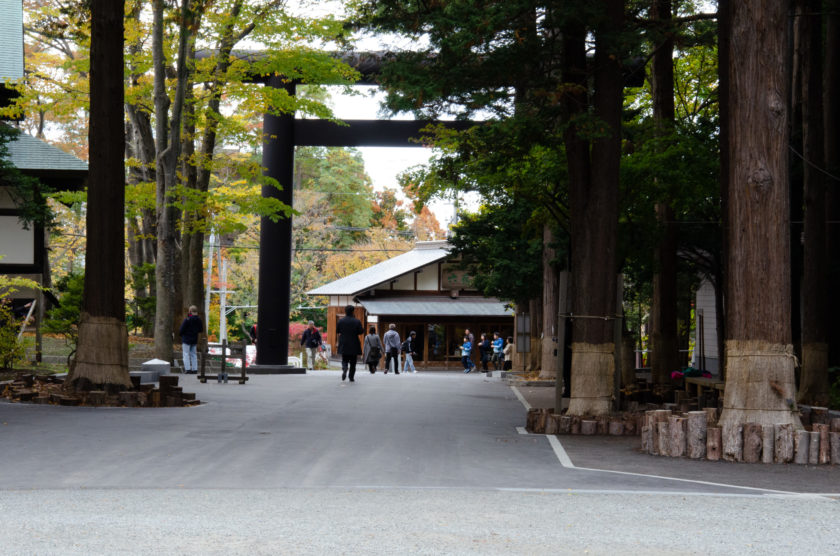
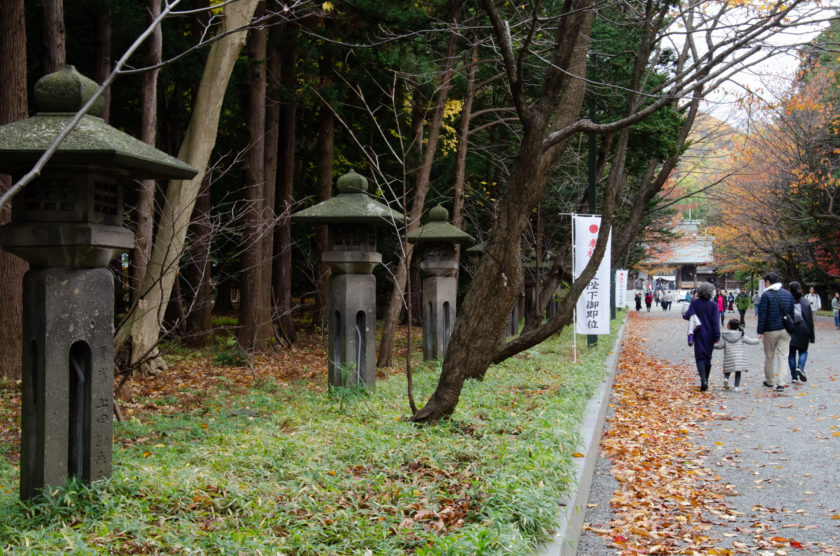
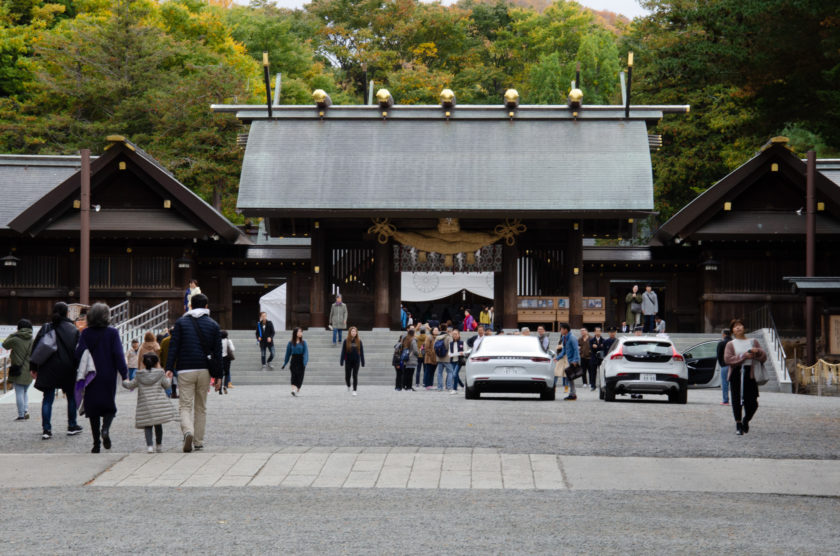
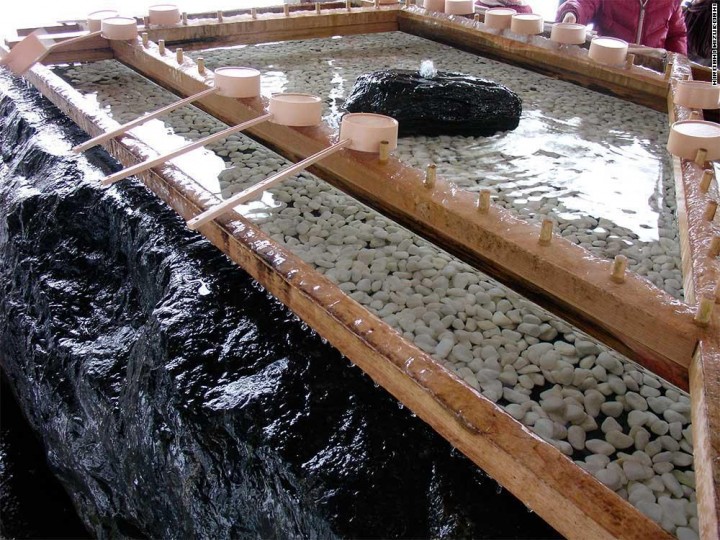
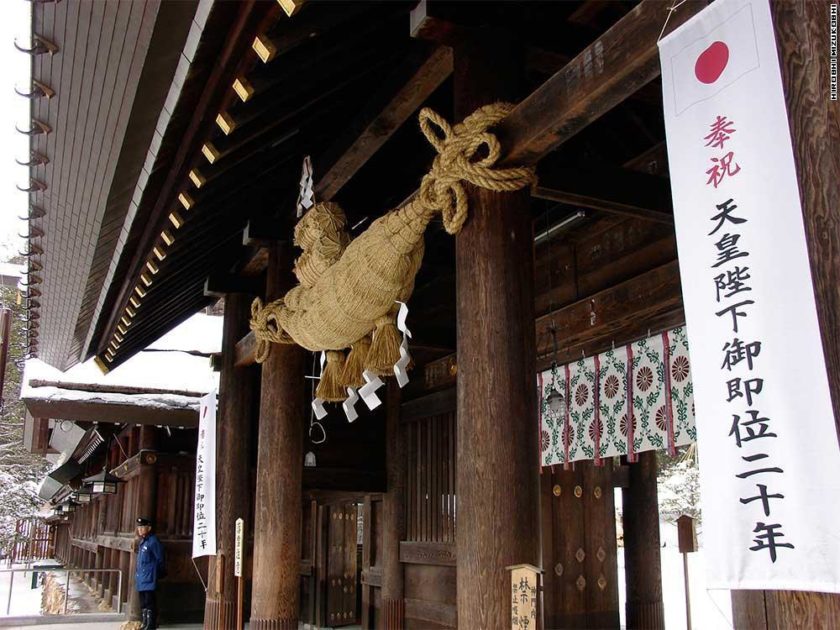
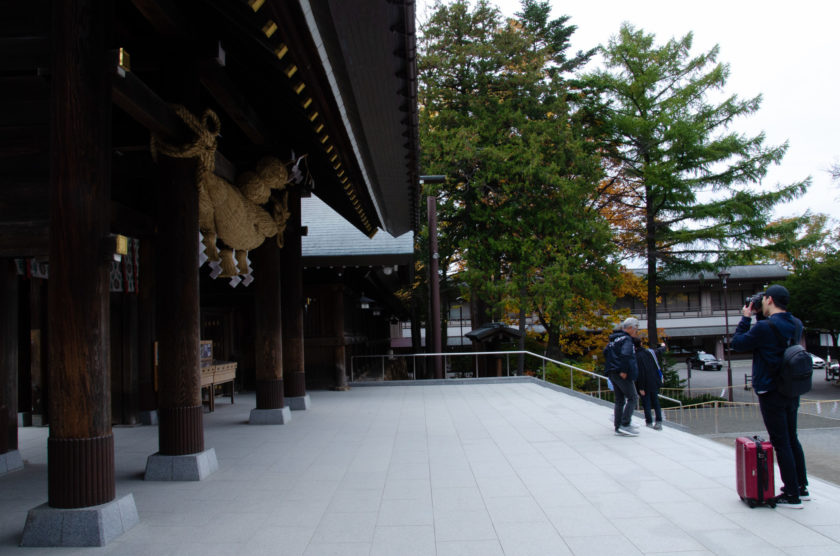
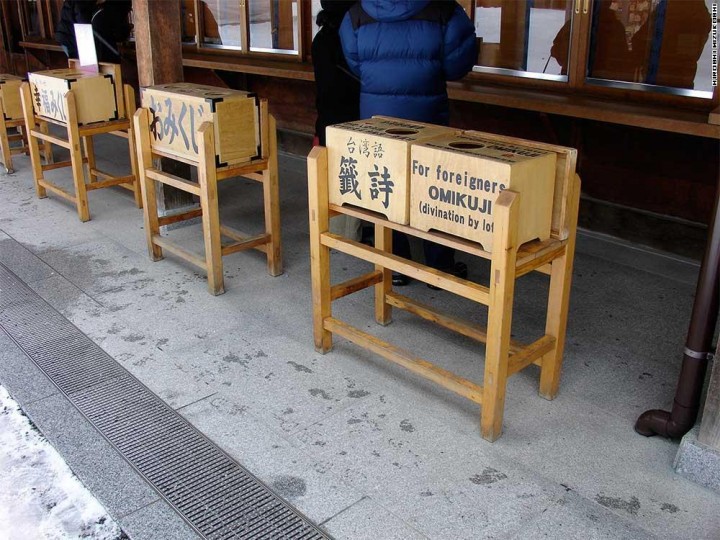
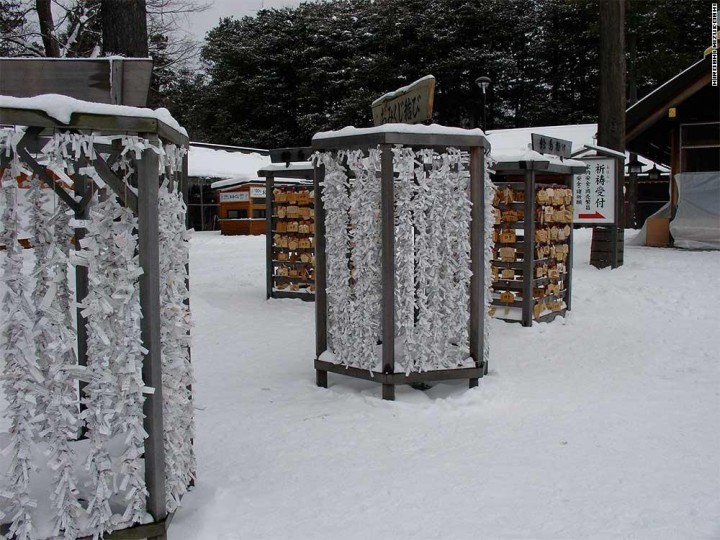
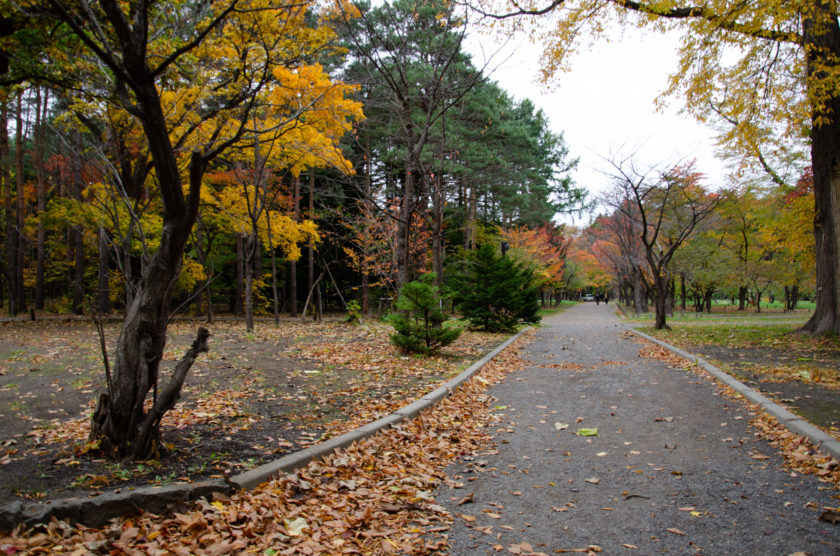
More visiting spots if you have time
see more detail about Maruyama Area by Google Map Engine
Maruyama Zoo 円山動物園
Opposite Hokkaido Shrine, you’ll find yourself facing Maruyama Hachijyu-Hakkasho, tucked away amidst the woods as you move past the shrine and take the right path towards Urasando’s parking area.
Continuing onwards, follow the path uphill to reach Maruyama Zoo, a brief 5-minute walk away. The zoo has been diligently refurbishing its aging facilities, drawing not only families but also young couples back to enjoy the experience.
While Asahiyama Zoo in Asahikawa gained fame as Japan’s most renowned zoo, Maruyama Zoo has been actively enhancing its exhibits lately, promising a delightful experience for all visitors!
related article
Maruyama Baseball Stadium 円山球場
Next to the Shrine, amateur baseball games take place here such as the high school baseball games. It has over 70 years-history so that many professional baseball games were held here before Sapporo Dome was built.
Maruyama athletic field 円山競技場
Next to the Maruyama Baseball Stadium. In winter, you can play skating with rental equipments.
Maruyama Park 円山公園
You’re already in the Maruyama Park! You were walking through the Park as you coming. There are many cherry blossoms and people have a ‘Hanami’ party in the early May.
Maruyama Hachijyu-Hakkasho, eighty-eight Buddhistic spots 円山八十八カ所
This is a small mountain climbing. It takes about 40 minutes to the top of the Mt.Maruyama. You have to prepare especially your shoes, trekking shoes or climbing shoes better. The area, ‘Maruyama Genshirin’ 円山原始林 is said primeval forest. You can experience an untouched forest left in the urban city.
Starbucks Coffee Maruyama
Across the Miyanosawa-dori, north side of Maruyama Park. Another Starbucks is in Maruyama Class.
French Restaurant Moliere
Three stars Michelin guide restaurant.
Miyakoshiya Coffee Shop 宮越屋珈琲
When you come back to the subway station, you may drop in at the coffee shop. Walking down along with the ‘Urasando’, you will find a chic building. see Miyakoshiya Coffee Shop WEB site (no english site)
Rokkatei 六花亭
This is one of the most well-known old-established sweets company in Hokkaido. The shop is so familiar that is always crowded. They have not only some old fashioned Japanese cakes but also new modern sweets.
coffee shop : 10:30-18:00
MORIHICO.(森彦) Coffee & Something
Morihico is one of the best coffee shop in not only Sapporo but also Hokkaido and Japan.
Since 1996, Morihico has started as a small coffee shop in Maruyama that is the old wooden house. The founder, Sosuke Ichikawa renovated the house and opened as a coffee shop.
Now his coffee has been growing up as a NO.1 coffee company in Sapporo and Hokkaido. This is the first memorial shop for Morihiko. Enjoy their coffee and take a break.
Yoneya 米屋
Old-fashioned Japanese sweets, as we say ‘Wagashi(和菓子)’. Yoneya is one of the old-established store in Sapporo. If you want Japanese traditional sweets, this is the best shop. It’s worth visiting.
Access
Address
474 Miyagaoka, Chuo Ward, Sapporo City, Hokkaido 064-0959, Japan
